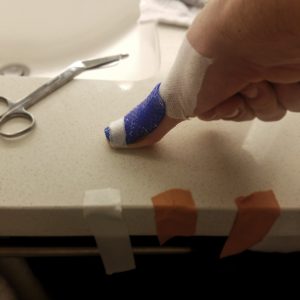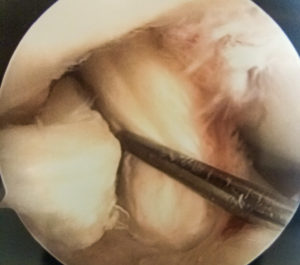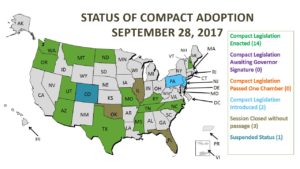If you went into rehab to get rich, you’ve made some questionable decisions.
 Physical therapy students are coming out of school with 100K to 200K in student loan debt. Insurance payments for therapy tend to be decreasing rather than increasing. It’s understandable that therapists, especially new grads, would want to come out of school and immediately maximize their income, but I’m writing here to plead you to take your time, be patient – you’re going to do better in the long-run taking “stepping-stone” jobs than going for big money as quickly as you can.
Physical therapy students are coming out of school with 100K to 200K in student loan debt. Insurance payments for therapy tend to be decreasing rather than increasing. It’s understandable that therapists, especially new grads, would want to come out of school and immediately maximize their income, but I’m writing here to plead you to take your time, be patient – you’re going to do better in the long-run taking “stepping-stone” jobs than going for big money as quickly as you can.
I’ll be the first to admit that the primary reason I show up to work each day is because I’m getting paid. If I weren’t being paid, I would blow off work often (or at least show up late). The reason I am there so consistently and for so many hours is simple . . . money. Don’t get me wrong, I like what I do. Being a Physical Therapist is a great way to spend many hours of my week directly helping people and doing something meaningful and good in this world. But, when it all boils down, we have jobs for one primary reason – money. If I won the lottery today – and not just a little, but let’s say a whopping retire-with-a-yacht-sized jackpot – I think I’d continue in therapy in some way, but it certainly wouldn’t be 40 hours per week, and it probably wouldn’t be before 10 AM.
My path as a PT, and specifically as a traveling PT, has not been a difficult one. Kate and I had a very reasonable amount of debt coming out of school and were able to eliminate it in just a few years through smart spending while working as travel PTs. I’ve written in the past about the financial advantages of travel PT over permanent work while I also maintain that new grads should not go straight into travel PT. This discussion I’m attempting to have here is much like my argument for new grads being patient, getting a little professional experience, and then going into travel therapy – a little patience greatly improves your ability as a traveler to pick the jobs you want and improve your overall experience traveling. This is the same mentality as having a little patience in your career, slowly gaining knowledge through your early experiences, and gradually transforming into an expert clinician that can confidently negotiate for top pay.
There are blogs and “gurus” out there that claim new grad Physical Therapists should be aiming to make upwards of 100K straight out of school. They purport that there are an abundance of jobs that any therapist with entry level skills could grab today and get rich quick. On the other side of this equation are new grads I talk to who are already burnt out. Recently, my lab partner at a course was 2 years into her career and already had classmates who had left the profession due to burn out. She, herself, was managing a clinic for a major national therapy chain seeing 4 patients an hour…. no other therapists in the clinic, just her, a new grad, pressured to see a patient every 15 minutes. Our entire profession should be appalled – even if she is a good clinician, this is a crap physical therapy model. The idea of seeing patients every 15 minutes should stun and sadden all of us.

High volume physical therapy clinics are giving us all a bad reputation. They should not be tolerated and we should insist that all of our friends and colleagues stop providing therapy in this manner. Superior patient care comes largely from increased 1:1 PT:patient time.
A close friend of mine has worked his way up in the ranks of the same national chain as the new grad I just mentioned. He has maintained a 1 to 1 PT-to-patient ratio in the clinics he manages, but he’s losing many of his therapists to another large chain opening in his area. He’s very willing to pay his therapist well, but the new chain infiltrating his area is paying relatively inexperienced therapists $90,000/yr. On the surface, that’s tough to compete with, but do you think these therapist see 1 patient every 45 minutes to an hour? They most certainly do not. These therapists leaving to make the much higher pay can kiss mentorship, paid professional growth, and anything that doesn’t contribute to the overall productivity of the clinic GOODBYE!
A lot of clinics and facilities bill poorly. I believe that’s where a lot of the perception of under-reimbursed PT clinics comes from. When employers put their efforts into billing properly and efficiently, clinics make reasonable money and therapists are paid adequately. I “grew up”as a PT in the Northeast where high-volume models are more the norm than in other areas of the country. I believed at that time that several patients arriving per hour being treated by a therapist and a number of PTAs, ATCs, and Massage Therapists was the only way therapy could be delivered while still making a profit – just not true – and I thought this was the way the whole industry worked. Sadly, so many people are willing to apply their own, personal circumstances to an industry as a whole. i.e. “I worked as a PT for 4-years, but healthcare is factory. I WAS FORCED to see 4 patient an hour, that’s why I got out.” In my personal experience, after 10 years as a traveling Physical Therapist, I learned that there is a huge volume of jobs willing to hire well qualified therapists to work 1-on-1 with patients for an hour at a time. I have worked for clinics serving patients this way in 7 out of 7 states I have worked in. The mantra that reimbursements are too low to allow for hour treatments is a complete farce and a product of either sloppy billing or greed. But, then again, most clinics seeing patient 1 on 1 for an hour are not paying as high as the clinics seeing multiple patients per hour.

A culture of continuous learning at work should be a huge deal to you. Without research discussion, coworker inservices, and other educational opportunities built into the work-week, keeping up on your own professional growth can become an arduous task.
So, back to our gurus who tell thousands of student and new grad DPTs that they can go out a grab their $100,000 per year straight out of school. I do think these guys have some big parts of their message right: each therapist should be advocating for him or herself. Learn to negotiate, and get more than your boss would like to give you. I bet the articles out there advocating high pay for inexperienced therapists are actually driving up pay of all therapists, and hopefully, in turn, insurance payments as well. Therapists are frequently undervalued and need to put more time and effort into advocating for themselves and seeking out the better deal. But, the better deal is not just more money, it should also include weighing the value of a happier professional and personal life as well as being incentivized at work to provide BETTER patient care, not just MORE patient care. Do you see 10 patients each day, or do you see upwards of 40? How many support staff is each therapist supervising? Is it all evals and discharges while someone else carries out the “treatment”? Is work time and money allocated for learning – or are you doing all of your continuing ed on your own dime? Is work time allocated for documentation – or are you doing paperwork on the weekends from home? Most importantly – ask yourself if your job is setting you up to provide the best care you can to your patients. Therapists being set-up to provide great care is important to our patients, our profession, and to our own self-satisfaction.
If everything else about two jobs is equal, by all means, take the one offering more pay. But don’t forget all the other factors that play into choosing a job. For me, time with my patients is huge; I don’t want someone else carrying out the treatment, I want to get to know my patient and provide top-notch care on my own. I believe that most of the high-pay jobs you find also tend to be high-volume. What on Earth can you effectively do with a patient in 15 minutes? …30 seems like a rush-job to me as well. While the instinct seems to be to flock to more money, I believe the majority of these clinics are a pipeline to burnout after providing awful patient care to hundreds (thousands?) of people.
The whole purpose of our jobs in healthcare is to help people, to make them feel less pain as they complete the tasks of their day, and to help them move better. As a profession, we should wholly reject high-volume rehab-factories. These clinics provide inferior care to patients, wear-out young clinicians, and are a poor representation of the abilities of therapists. If you or your friends are seeing multiple patients every hour, look around your area and see what other opportunities might be available.
Take your time choosing the right job for you. When coming out of school with seemingly insurmountable debt, it seems that getting the highest paying job ASAP is the greatest priority, but getting that job and then burning out quickly does nothing to pay off your debt. The slow road is not sexy, but if you choose good professional situations where high-value patient care is a priority, you will gradually gain experience over time. Those high-value experiences will eventually lead you to higher paying jobs, financial freedom, and most importantly personal satisfaction. By all means, take the job that pays you best, but it must also maintain excellent patient care and provide you the tools to be happy and successful at work.









 $10,350 less for our estimated traveling costs brings us down to $68,850 after taxes, or the equivalent of a $95,625 taxed salary.
$10,350 less for our estimated traveling costs brings us down to $68,850 after taxes, or the equivalent of a $95,625 taxed salary.



 Over the past several winters, Kate has been working in a slopeside clinic on Snowmass Mountain where ski patrol brings in the injured directly from the mountain. (Fun fact, the rate of injury in recreational alpine skiing and snowboarding is 2-3 per 1000 ski days. Meaning for every 1,000 skiers on the mountain, you’ll have 2 to 3 patients.) Kate is able to offer her help to Ski Patrol managing on-slope injuries in between scheduled outpatients coming specifically for PT – it’s a very cool practice setting. Also based in the base village at Snowmass is Challenge Aspen, a charity that provides really exceptional outdoor recreation experiences for the physically and cognitively challenged. Over Kate’s time in Snowmass, she has gotten to know much of the Challenge Aspen staff and has learned about the work they do. One big event they do every year for their annual fundraising is a marathon, typically held in a different country. When I was thinking about a lot of running this summer, and Kate was hearing from her Challenge Aspen friends that the marathon will be in Iceland this year. We knew we had to consider the trip. With a new house, a new baby, and establishing a new summer routine in Aspen, we have a lot on our plates, but the opportunity to travel to Iceland while supporting a fantastic cause is too much to pass up. The $3,950 goal that each runner must raise will be a challenge, but I know we can do it and hope to exceed that goal.
Over the past several winters, Kate has been working in a slopeside clinic on Snowmass Mountain where ski patrol brings in the injured directly from the mountain. (Fun fact, the rate of injury in recreational alpine skiing and snowboarding is 2-3 per 1000 ski days. Meaning for every 1,000 skiers on the mountain, you’ll have 2 to 3 patients.) Kate is able to offer her help to Ski Patrol managing on-slope injuries in between scheduled outpatients coming specifically for PT – it’s a very cool practice setting. Also based in the base village at Snowmass is Challenge Aspen, a charity that provides really exceptional outdoor recreation experiences for the physically and cognitively challenged. Over Kate’s time in Snowmass, she has gotten to know much of the Challenge Aspen staff and has learned about the work they do. One big event they do every year for their annual fundraising is a marathon, typically held in a different country. When I was thinking about a lot of running this summer, and Kate was hearing from her Challenge Aspen friends that the marathon will be in Iceland this year. We knew we had to consider the trip. With a new house, a new baby, and establishing a new summer routine in Aspen, we have a lot on our plates, but the opportunity to travel to Iceland while supporting a fantastic cause is too much to pass up. The $3,950 goal that each runner must raise will be a challenge, but I know we can do it and hope to exceed that goal.









